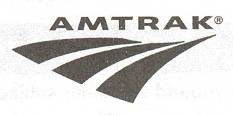
The Lackawanna Railroad Terminal
In honor of St. Patrick’s Day, today I post, a Green Station. Now, before some of you start adjusting your color settings, or accuse me of digital chicanery, let me assure you, this is a fairly accurate representation of the actual color of the station. I admit, it is a bit unusual, but indeed, even in the broad daylight without the benefit of colored floods (a la’ the Empire State Building), it is green.
This coloration is a result of the design of the work of the architect Kenneth M. Murchison (his work has been featured on a previous posting). He designed this station for the Lackawanna Railroad (technically and legally the railroad in question was the Delaware Lackawanna and Western Railroad, but it was normally referred to by just the one name) in 1907. He collaborated with Lackawanna Chief Engineer Lincoln Bush, also noted as the creator of the “Bush Train Shed.” In it Murchison used the then predominate architectural style which has been classified as “Art Nouveau.”
Apparently one of the main stipulations in the contract that Murchison had with the Lackawanna was that any structure he built for them in Hoboken had to be “Fireproof” (perhaps because the previous Hoboken Lackawanna Terminal had burned to the ground?). Accordingly, Murchison clad most of the exterior of the building in copper, which by now has “rusted” into the green that is seen today.
The station is technically not actually a “Terminal” rather it has always been more of a transfer point, or what we would call today an “Intermodal Facility.” Passengers coming into the station by train would, and still, debark and board a waiting ferry to complete their trip into Manhattan. In like manner, passengers coming from New York City by boat would, and still, alight here and board an outbound train.
In its inception, the Hoboken Lackawanna Terminal was built to serve both those commuting into New York from the surrounding New Jersey/New York/ Pennsylvania countryside, and those coming from more distant points such as Chicago. In the late 1950’s the Erie Railroad, which at that point was in the process of merging with the Lackawanna, closed out its Jersey City operations and moved them into this terminal. But this was only a temporary measure. In 1970, all inter-city operations out of the Hoboken Terminal ceased leaving only the commuter runs. These commuter operations, and this terminal were later taken over by New Jersey Transit, which continues to use the station to this day (however, the Bush Train Shed is now gone).
There have been two other recent changes. While there is still some ferry service from the terminal, and indeed probably some of the ferries involved in the recent rescue of the passengers from the Delta Airliner that landed in the Hudson recently were from this terminal, for many people this option has been supplanted by the PATH “tubes” which run over to 33th street in Manhattan. Even more recently, a surface “light rail” operation running along the New Jersey shore of the Hudson, called the Hudson-Bergen line, has been added. Thus, while it no longer hosts long-distance travelers, the station remains a true “Inter-modal” operation in the most modern sense of the word for thousands of commuters each day.
There are two further interesting notes concerning this station. First, owing to its Riverside location, the terminal building (shown) and the ferry slips are built out over the water. Only the land-side train tracks and adjacent yard trackage are actually on land. Second, the famous Wizard of Menlo Park, Thomas Alva Edison, brought an interesting closure to his career by piloting the first electrified equipment (which his company had built) that left the station in 1931 (Edison’s first job was selling papers and snacks on the trains of the Michigan Central). The equipment Edison introduced was finally retired in 1980, but it has been replaced by newer more modern equipment. Thus, the Hoboken Lackawanna Terminal has both diesel-electric and “pure” electric commuter trains operating out of its restored and refurbished surroundings.


